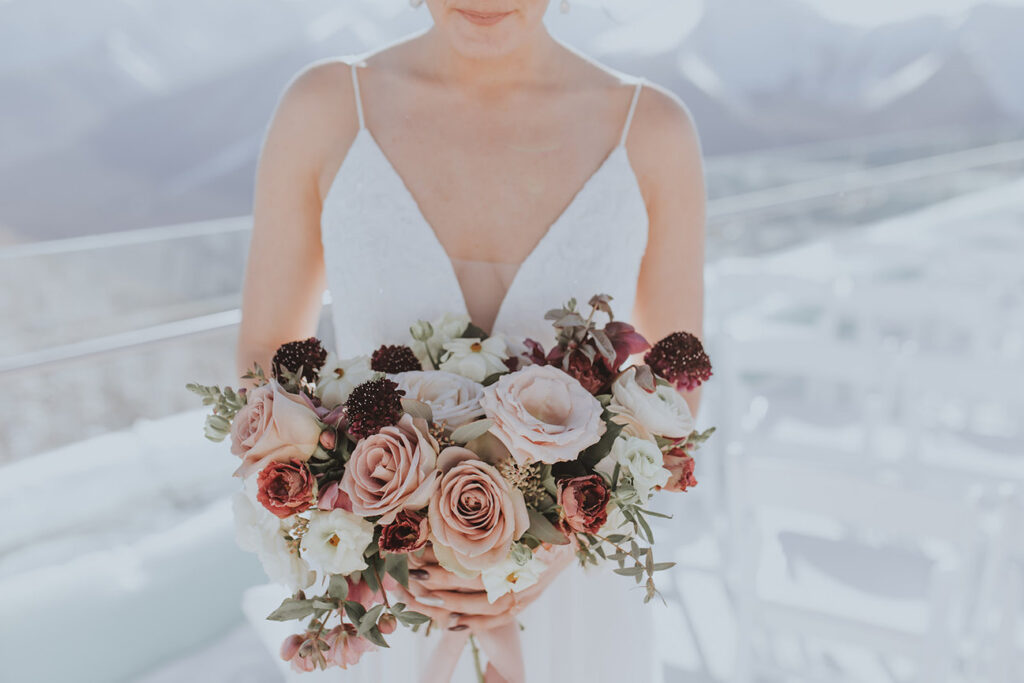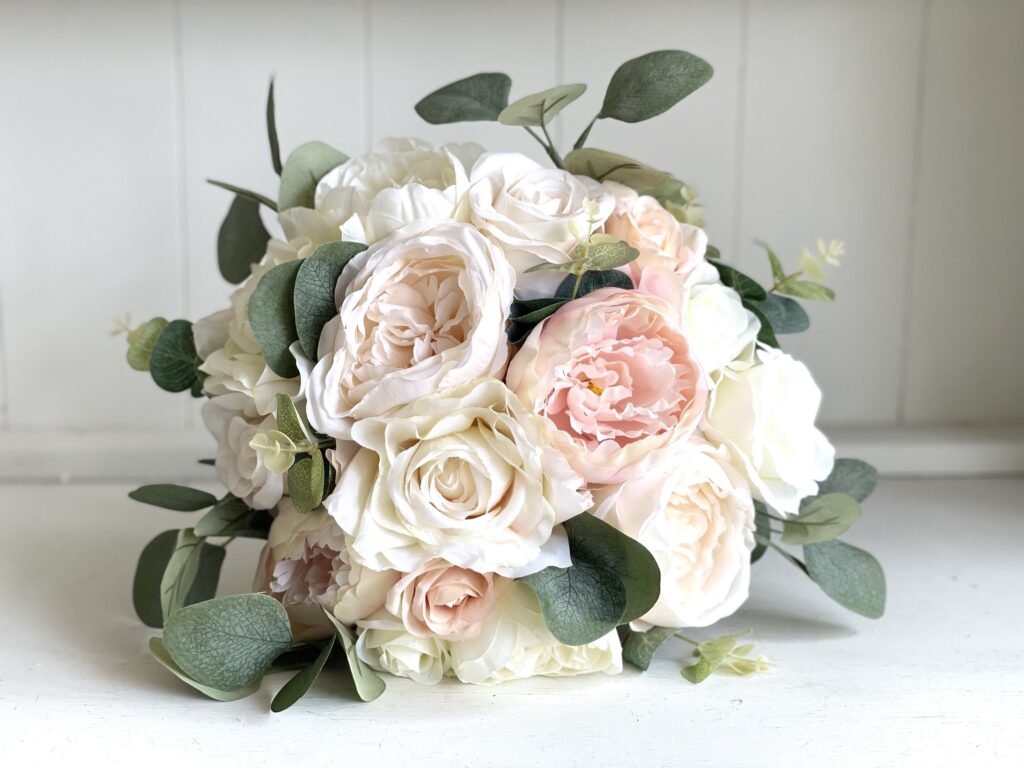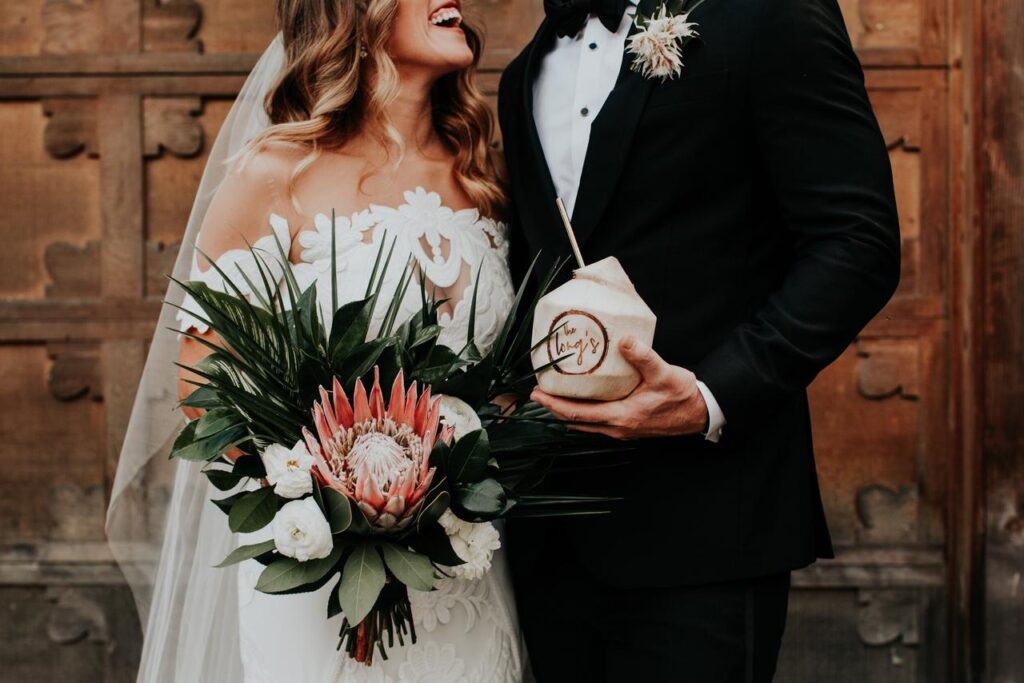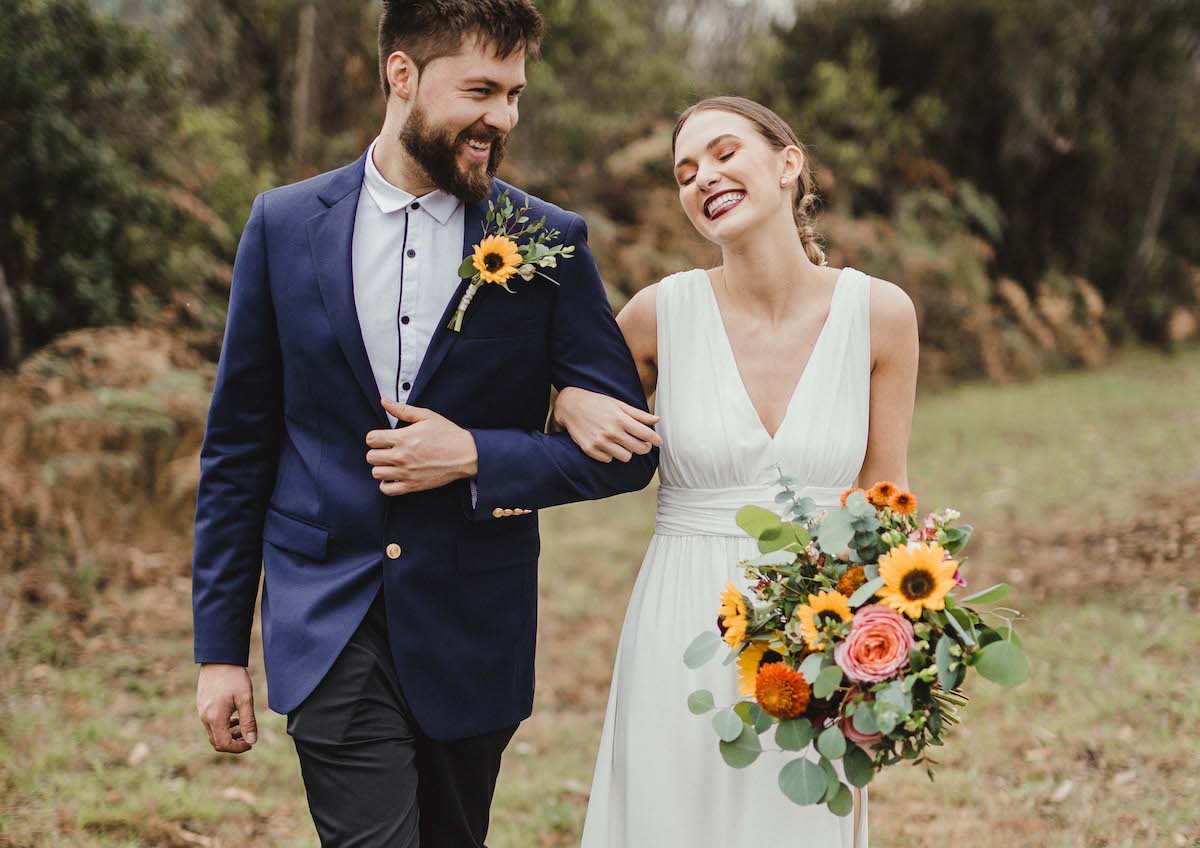Flowers have always played a significant role in weddings, symbolizing love, beauty, and the natural cycle of life. Understanding the symbolism behind popular wedding flowers can help you choose the perfect blooms to create a meaningful and beautiful atmosphere on your special day.
Understanding Flower Symbolism
Flower symbolism has existed for centuries, with different cultures attributing various meanings to different wedding flowers Sydney. In weddings, flowers are carefully selected to convey specific emotions and messages. By incorporating these symbolic flowers into your wedding decor, you can add depth and significance to your celebration.
When it comes to understanding flower symbolism, it is fascinating to explore the rich history behind this tradition. The use of flowers in weddings dates back thousands of years, with ancient civilizations embracing their beauty and symbolism. For instance, in ancient Greece, brides adorned themselves with floral garlands to symbolize fertility and new beginnings. This practice not only added a touch of natural elegance to the bride’s appearance but also conveyed the hope for a fruitful and prosperous union.
As time went on, the significance of flowers in weddings continued to evolve. During medieval times, herbs and flowers were carefully chosen for their symbolic meanings. Each flower was believed to possess certain qualities or virtues that the couple wished to embody in their marriage. For example, lavender was associated with devotion, while rosemary symbolized fidelity. By incorporating these meaningful blooms into their wedding ceremonies, couples sought to express their intentions and aspirations for their union.

The History of Flower Symbolism in Weddings
Flowers have been used in weddings for thousands of years, dating back to ancient civilizations. In ancient Greece, brides wore floral garlands to symbolize fertility and new beginnings. In medieval times, herbs and flowers were chosen for their symbolic meanings. Today, the tradition continues with couples using flowers to express their love and commitment.
As the centuries passed, the tradition of using flowers in weddings spread across different cultures and regions. Each culture added its own unique interpretations and symbolism to the flowers they incorporated into their wedding celebrations. In some cultures, certain flowers were believed to bring good luck or ward off evil spirits, while in others, they were seen as a representation of purity and beauty.
Today, flower symbolism in weddings has become a way for couples to personalize their special day and infuse it with deeper meaning. By carefully selecting flowers that hold significance to them, couples can create a unique and heartfelt atmosphere. Whether it’s roses to represent love and passion, lilies to symbolize purity and innocence, or daisies to convey loyalty and fidelity, the choice of flowers can speak volumes about the couple’s emotions and desires.
Interpreting Flower Meanings
Each flower has its own unique symbolism. For example, roses are often associated with love and passion, while lilies symbolize purity and innocence. Daisies, on the other hand, represent loyalty and fidelity. It’s important to consider the meanings behind different flowers when selecting your wedding blooms, as they can add a deeper layer of sentiment to your ceremony and reception.
When interpreting flower meanings, it’s essential to take into account not only the cultural associations but also the personal significance they hold for the couple. Flowers can evoke memories, emotions, and connections to loved ones, making them even more meaningful in the context of a wedding. By understanding the symbolism behind different flowers and incorporating them thoughtfully into the wedding decor, couples can create a truly personalized and heartfelt celebration of their love.
The Role of Color in Flower Symbolism
Color also plays a significant role in flower symbolism. Different colors evoke different emotions and convey distinct messages. Understanding the traditional and modern interpretations of flower colors can help you create a cohesive and meaningful floral design for your wedding.
When it comes to traditional color meanings, red is a color that is often associated with love and passion. It has long been a popular choice for romantic weddings, as it symbolizes the deep emotions and intense connection between two people. The vibrant and bold nature of red flowers, such as roses, can add a passionate and romantic touch to your wedding decor.
On the other end of the spectrum, white symbolizes purity and innocence. It is a color often seen in bridal bouquets, representing the bride’s pure and untouched nature as she embarks on her journey into marriage. White flowers, like lilies or orchids, can create an ethereal and elegant atmosphere, adding a touch of grace and beauty to your special day.
Pink, a color associated with femininity and grace, can bring a soft and delicate feel to your wedding. It represents love, admiration, and sweetness. Pink flowers, such as peonies or carnations, can add a romantic and charming touch to your floral arrangements, creating a sense of beauty and tenderness.
Yellow, a color often associated with sunshine and happiness, symbolizes friendship and joy. Incorporating yellow flowers, like sunflowers or daisies, into your wedding can bring a cheerful and vibrant energy to the celebration. Yellow flowers can also represent new beginnings and optimism, making them a perfect choice for a joyous occasion like a wedding.
Understanding these traditional color meanings can help you choose flowers that align with the emotions and atmosphere you want to create on your special day. However, it’s important to note that the symbolism of flower colors has evolved over time, and modern interpretations have expanded the range of meanings.
In modern times, purple has become associated with luxury and royalty. It is a color often chosen for elegant weddings, as it adds a touch of sophistication and grandeur. Purple flowers, such as lavender or orchids, can create a regal and majestic ambiance, elevating the overall aesthetic of your wedding decor.
Blue, a color that represents tranquility and serenity, can bring a sense of calmness and peace to your wedding. Blue flowers, like delphiniums or hydrangeas, can create a serene and soothing atmosphere, providing a tranquil backdrop for your special day. Incorporating blue into your floral design can evoke a sense of relaxation and harmony.
Green, the color of nature, symbolizes renewal and growth. It represents freshness, vitality, and new beginnings. Incorporating green flowers, such as ferns or green hydrangeas, into your wedding can bring a sense of rejuvenation and natural beauty. Green also symbolizes fertility and abundance, making it a perfect choice for couples who are looking to start a family.
By incorporating both traditional and modern interpretations of flower colors into your wedding, you can create a unique and personalized floral design. Whether you choose to stick with the traditional meanings or explore the expanded symbolism, the colors you choose will add depth and meaning to your special day.

Popular Wedding Flowers and Their Meanings
When it comes to weddings, flowers play a significant role in setting the tone and creating a romantic atmosphere. Some flowers have become synonymous with weddings and carry universal meanings that resonate with many couples. Let’s explore the symbolic meanings behind some of the most popular wedding flowers.
The Romantic Symbolism of Roses
Roses are the epitome of love and romance. Their velvety petals and enchanting fragrance have captivated hearts for centuries. Red roses, in particular, symbolize deep love and passion, making them a classic choice for wedding bouquets and arrangements. The vibrant red hue of these roses represents the intensity of emotions shared between two people embarking on a lifelong journey together.
White roses, on the other hand, represent purity and innocence. They evoke a sense of divine beauty and untainted love. White roses are often incorporated into wedding ceremonies to symbolize the pure intentions of the couple and the sacredness of their union.
For couples who value admiration and gratitude, pink roses are an excellent choice. These delicate blooms symbolize appreciation and admiration for one another. Incorporating pink roses into your wedding can not only add a touch of elegance but also serve as a reminder of the deep bond and gratitude you share.
The Purity of Lilies
Lilies are often associated with purity and elegance, making them a popular choice for wedding ceremonies. These graceful flowers have a timeless beauty that effortlessly enhances any wedding setting. White lilies, in particular, symbolize purity and the innocence of the bride. Their pristine petals and enchanting fragrance create an atmosphere of serenity and tranquility.
As the bride walks down the aisle, carrying a bouquet of white lilies, she embodies purity and grace, ready to embark on a new chapter of her life. The presence of lilies in a wedding not only adds a touch of sophistication but also symbolizes the couple’s commitment to maintaining purity and integrity in their relationship.
The Loyalty Represented by Daisies
Daisies are known for their simplicity and cheerful demeanor. These charming flowers symbolize loyalty and faithfulness, making them an ideal choice for couples who prioritize commitment in their relationship. The bright and cheerful appearance of daisies brings a sense of joy and positivity to any wedding celebration.
By incorporating daisies into your wedding decor, you not only infuse your special day with a burst of vibrant colors but also symbolize the unwavering loyalty and devotion you have for one another. Just as daisies stand tall and resilient, your commitment to each other will remain strong, even in the face of challenges.
Choosing the right flowers for your wedding goes beyond aesthetics. Each bloom carries its own unique symbolism, allowing you to express your love, purity, and loyalty in a meaningful way. Whether you opt for the romantic allure of roses, the purity of lilies, or the loyalty represented by daisies, your choice of wedding flowers will add an extra layer of depth and significance to your special day.

Incorporating Flower Symbolism into Your Wedding
Now that you understand the symbolism behind popular wedding flowers, it’s time to consider how to incorporate these symbolic blooms into your special day.
Choosing Flowers that Represent Your Relationship
Consider the meanings behind different flowers and select those that resonate with you and your partner. If you prioritize love and passion, roses may be the perfect choice. If purity and elegance are important to you, lilies might be more fitting. By choosing flowers that symbolize your relationship, you can infuse your wedding with deeper meaning and personal significance.
Flower Arrangements and Their Symbolic Impact
How you arrange your wedding flowers can also contribute to the overall symbolism of your celebration. For example, a cascading bouquet of roses can symbolize abundant and eternal love, while a simple posy of lilies can represent purity and grace. Consider working with a florist who understands the nuances of flower symbolism and can create arrangements that reflect your desired message.
Cultural Variations in Flower Symbolism
Flower symbolism can vary across different cultures and traditions. Understanding these cultural variations can enrich your wedding planning process and help you incorporate meaningful symbols into your celebration.
Eastern Interpretations of Flower Meanings
In Eastern cultures, such as Japan and China, flower symbolism holds great significance. Cherry blossoms, for example, represent beauty and fragility in Japanese culture, while lotus flowers symbolize purity and enlightenment in Chinese culture. Incorporating these Eastern interpretations of flower meanings into your wedding can add a touch of cultural diversity and depth.
Western Traditions and Flower Symbolism
In Western traditions, specific flowers have become associated with certain occasions and emotions. For example, red roses are often given on Valentine’s Day to express love and affection. By incorporating these Western traditions and flower symbolism into your wedding, you can tap into shared cultural meanings and create a sense of connection with your guests.
In conclusion, understanding the symbolism behind popular wedding flowers can help you create a wedding that is not only visually stunning but also deeply meaningful. By selecting flowers with specific meanings, incorporating symbolic colors, and considering cultural variations, you can infuse your wedding with a rich tapestry of emotions and messages. Your wedding flowers will not only be beautiful decorations but also powerful symbols of love, commitment, and the joyous journey ahead.

